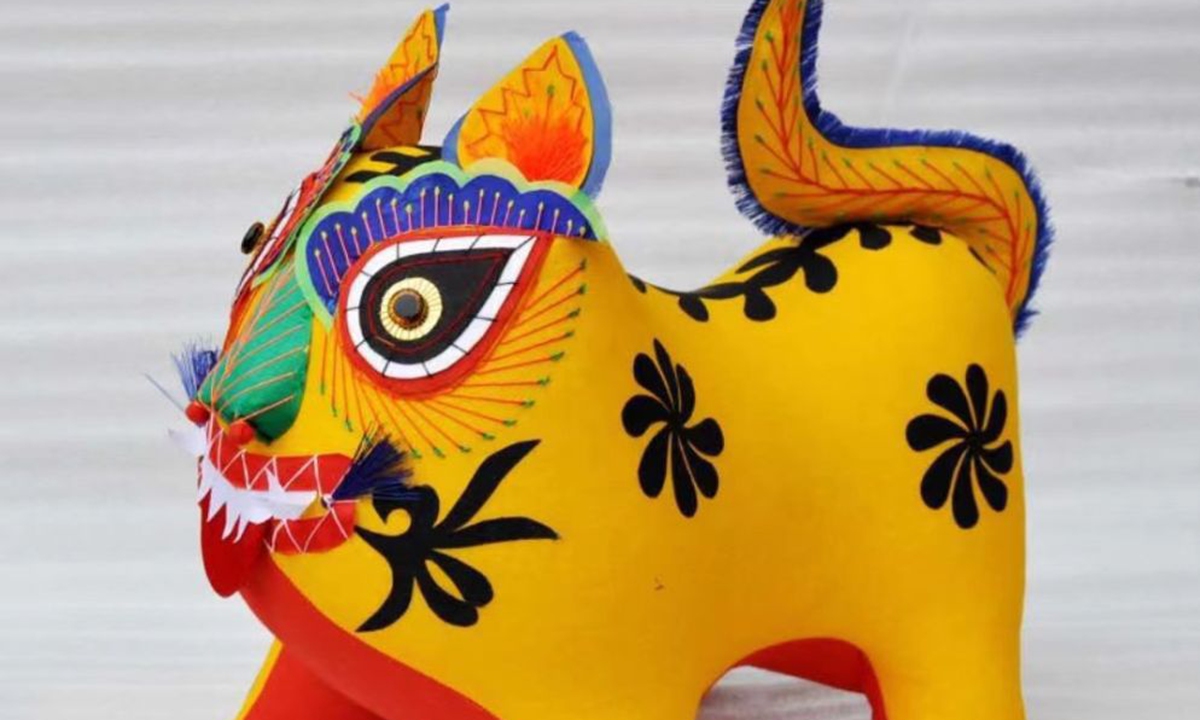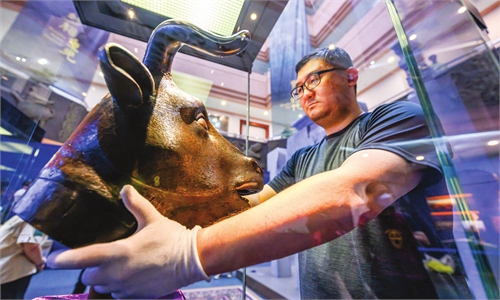ARTS / ART
Tourism boom promotes revitalization of intangible cultural heritage

Lihou Tiger Photo: Xinhua
Visitors asked questions and expressed praises for the hand-made cloth tigers as they gathered around an intangible cultural heritage products stall in a scenic area in Licheng county, North China's Shanxi Province.The Lihou Tiger, a national intangible cultural heritage, originated from the folk custom of using tigers as totems in the Shang and Zhou dynasties (1600BC-256BC) and gradually evolved into its present form, intertwining elements of storytelling, straw weaving, embroidery, paper-cutting, calligraphy, and painting.
"It carries cultural connotations like blessings, protecting the house and wealth creation," said Li Linyu, a shopping guide at the stall.
In recent years, the rapid growth of China's tourism sector has injected new vitality into the promotion, inheritance and development of intangible cultural heritage.
"Many tourists came to learn about the Lihou Tiger after seeing it in the scenic areas, and my intangible cultural heritage studio has almost become a must-visit place for tourists," said Li Xiaomei, a provincial-level inheritor of the Lihou Tiger.
China has more than 100,000 representative items of intangible cultural heritage at all levels, of which 1,557 are national intangible cultural heritage items and 43 have been inscribed on the UNESCO Intangible Cultural Heritage List.
The integration of tourism and heritage has also benefited from national support.
According to the country's 14th five-year plan for protecting intangible cultural heritage, a batch of experience bases and scenic spots characterized by intangible cultural heritage will be developed.

